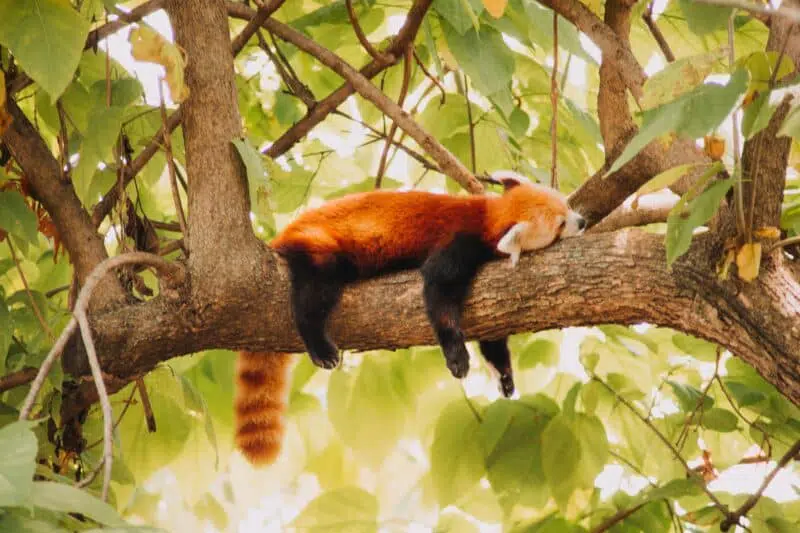Welcome to Top 10 Most Endangered Animals in India.
There are many species which are endangered across the globe. This should not be a statistic to be proud of, as humans are the main cause of these extinctions. Some of endangered animals are found in India.
Some species are marked as endangered species and some of them are threatened species. There are many animals which are now extinct. It is very important to protect these animals. Because if we are not able to make good sustainable decisions for their protection, then our coming generations will not be able to see and experience them.
Click below to jump to a section on top 10 most endangered animals in India:
#1 Asiatic Lion
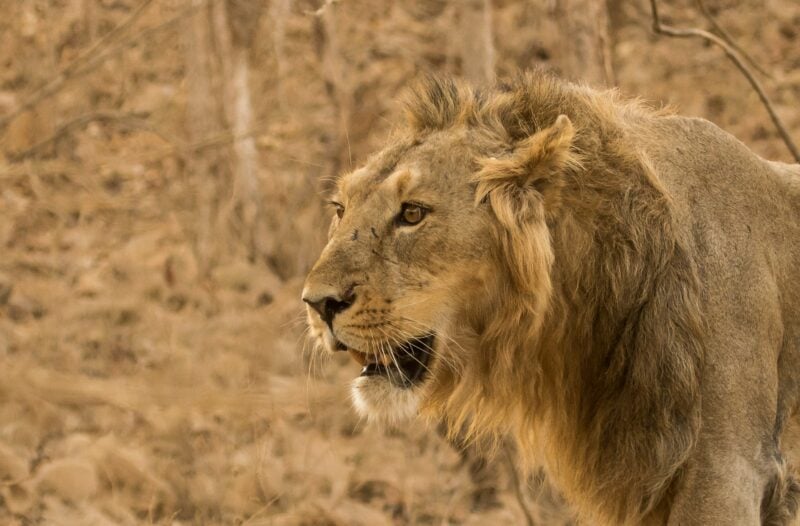
These lions are a Panthera leo populace existing today just in India. Since the turn of the twentieth 100 years, its reach has been confined to Gir National Park and the encompassing regions in the Indian territory of Gujarat. By and large, it occupied a significant part of the Center East to northern India. They are brown to reddish in look with dark colour dots marks on their body, these dots are sometime dim brown or sometime dark. Their back has shinny hairs. Male lions have pointed head which helps them in finding and have very harp ears.
The skull is around 330mm in male lions and in female lion it’s around 292mm in length. This creates a difference form African lion which have big tail tuft. It varies from the African lion by a bigger tail tuft and less expanded hear-able bullae. A Grown-up male Asiatic lion weighs 160.1 kg on normal with the breaking point being 190 kg (420 lb). An out of control female gauges 100 to 130 kg. Male Asiatic lions are lone, or partner with up to three guys, shaping a free pride.
Sets of guys rest, chase and feed together, and show stamping conduct at similar locales. Females partner with up to 12 females, shaping a more grounded pride along with their whelps. They divide huge corpses between one another, yet sometimes with guys. Female and male lions typically partner just for a couple of days while mating, yet seldom live and take care of together.
During hot and dry seasons, they favour thickly vegetated and obscure riverine territories, where prey species additionally assemble. Preceding the resettlement of Maldharis, the Gir woods was vigorously corrupted and utilised by animals, which contended with and confined the populace sizes of local ungulates.
Different investigations uncover huge territory recuperation and expansions in wild ungulate populaces following the resettlement of Maldharis since the 1970s. Almost 25 lions nearby Gir Woods were found dead in October 2018. Four of them had kicked the bucket due to canine sickness infection, the very infection that had likewise killed a few lions in the Serengeti. Making it top of the list of the top 10 most endangered animals in India.
#2 Bengal Tiger
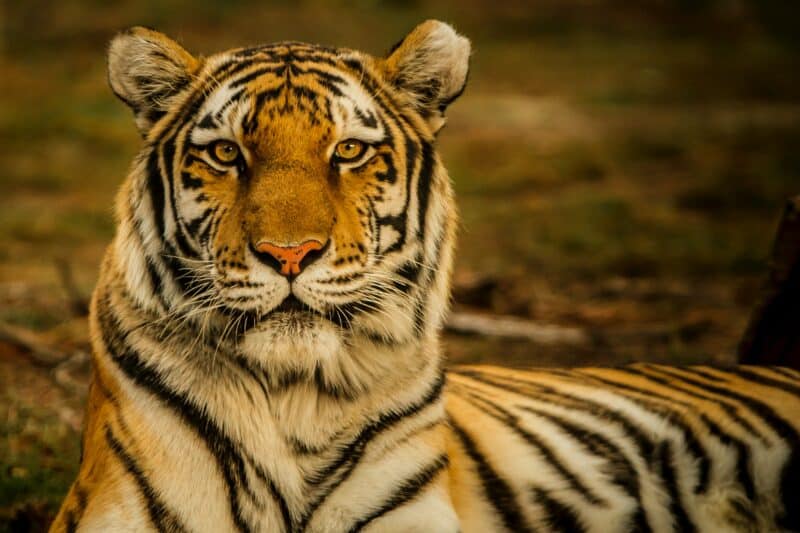
The Bengal Tiger is the public creature of both India and Bangladesh. The tiger’s jacket is yellow to light orange, with stripes going from dull brown to dark. The quantity of tigers has diminished decisively in the beyond couple of years, because of poaching and human-tiger struggle. The tiger is assessed to have been available in the Indian subcontinent since the Late Pleistocene, for around 12,000 to 16,500 years. Today, it is undermined by poaching, misfortune and discontinuity of territory, and was assessed at including less than 2,500 out of control people by 2011. Earning itself a spot on the list of the top 10 most endangered animals in India.
None of the Tiger Protection Scenes inside its reach is viewed as huge enough to help a successful populace of in excess of 250 grown-up individuals. The Bengal tiger’s jacket is yellow to light orange, with stripes going from dull brown to dark; the stomach and the inside pieces of the appendages are white, and the tail is orange with dark rings. The white tiger is a latent freak, which is accounted for in the wild now and again in Assam, Bengal, Bihar, and particularly in the previous Province of Rewa.
Notwithstanding, it’s anything but an event of albinism. Truth be told, there is just a single completely validated instance of a genuine pale skinned person tiger, and none of dark tigers, with the conceivable exemption of one dead example inspected in Chittagong in 1846 Bengal tigers arrive at a head-to-body length of 204 cm (80 in) in addition to a tail of 107 cm (42 in) and a load of up to 261 kg.
#3 Snow Leopard
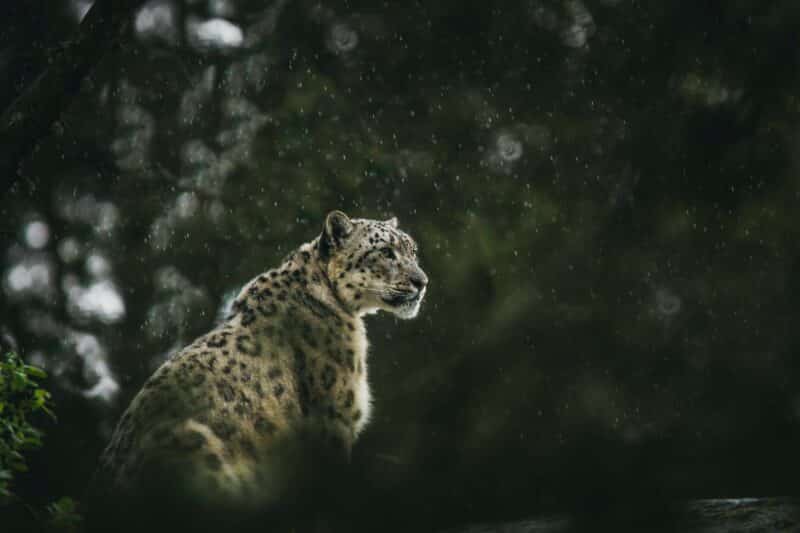
The snow leopard is a huge feline local to the mountain ranges in Focal and South Asia. Snow leopards have long, thick fur, and their base variety differs from smoky dark to yellowish tan, with whitish underparts. These creatures have progressed to burn through most fierce conditions on earth. They have white or dim variety coat on their back which is extremely thick.
Their coat is spotted with dark variety mixes. Their look and unbelievable nature some of them likewise called them as “Mountain Apparition”. Its back legs are so strong which help them in bounce and gives a jump which is additional time great as that of their body. They have long tail which gives them a grasp and capacity to hold in snow season and live in Snow Mountains and rocks. Snow leopards are known as the sort of Snow Mountains.
They are found in different districts according to the report they are found in 12 distinct nations like Nepal, India, Pakistan, and Russia and so forth. Their populace additionally changes in light of the prey and encompassing, climate, territory. Regardless, the snow leopard population is rapidly declining. Hence it is listed here as on the top 10 most endangered animals in India. The snow jaguar’s fur is whitish to dull with dim spots on head and neck, with greater rosettes on the back, flanks and shaggy tail. The stomach is whitish.
Its eyes are light green or dim in assortment. Its gag is short and its sanctuary domed. Its nasal cavities are gigantic. The fur is thick with hairs some place in the scope of 5 and 12 cm (2.0 and 4.7 in) long. Its body is stocky, short-legged, and imperceptibly more unassuming than various cats of the sort Panthera, showing up at a shoulder level of 56 cm and running in head to body size from 75 to 150 cm. Its tail is 80 to 105 cm long. It weighs some place in the scope of 22 and 55 kg with a rare colossal male showing up at 75 kg and minimal female of under 25 kg. Its canine teeth are 28.6 mm long and are slimmer than those of the other Panthera species.
#4 Black Buck
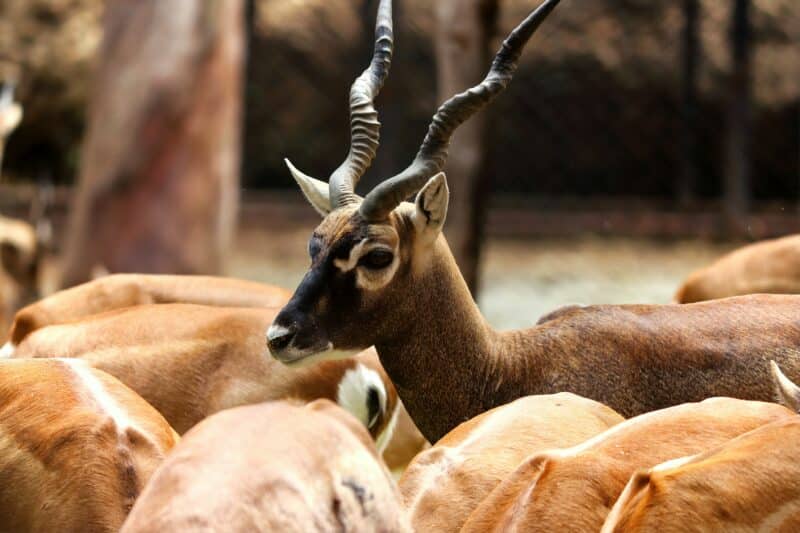
The Blackbuck is ungulate types of pronghorn and it is close undermined. The primary danger to this species is poaching, predation, natural surroundings obliteration, overgrazing, and inbreeding and asylum guests. They are majorly active in day time. There is a licking process which male bucks use to attract females for matting.
All males are not allowed to come in matting region only the chosen one will come and this way male will take female for mating. They are herbivorous in nature and feed on low grass area. Female buck will grow up when they are eight year old but they cannot mate till the age of two years.
Male bucks are grown up when they are 1.5 years old. Their life span is around 10-15 years of age. They are around 70-85cm in length from should and the total length of body from head to toe is around 120cm in length and female varies very less as compared to male.
#5 Red Panda
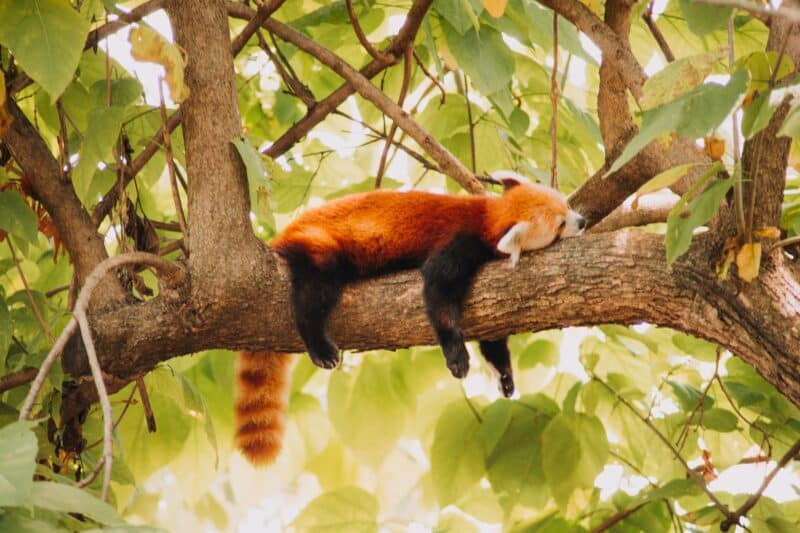
Red Panda is otherwise called a lesser panda or red feline bear. It is an arboreal vertebrate local toward the eastern Himalayas. Red Panda’s populace is on a diminishing given to natural surroundings misfortune and discontinuity, poaching, and inbreeding misery. The red panda, otherwise called the lesser panda, is a little vertebrate local toward the eastern Himalayas and southwestern China.
On their upper body region they have red or brown fur and belly is black and legs are also black with ring kind tail and white muzzle. From head to body they are around 50-63cm in length and tail is around 28-49cm in length. They weigh around 3kg to 15kg. They are very flexible in moving from one place to another as their joints are adaptable and paws are bending in shape. Gag, cheeks, foreheads and inward ear edges are generally white and the shaggy tail has red rings with tip is buff kind and is of dark brown. Their major or favourite habitat is covered trees of white lichen and red moss.
They have fur on their body which is dense in look, soft and seems to be woolly. They have hairs on their back which is called as guard hairs are 47-56mm long and have circle kind of marks. Around the jaw, mouth and chin area they have long whiskers. They have hair on their paws which helps them to walk in snow region.
#6 One Horned Rhinoceros
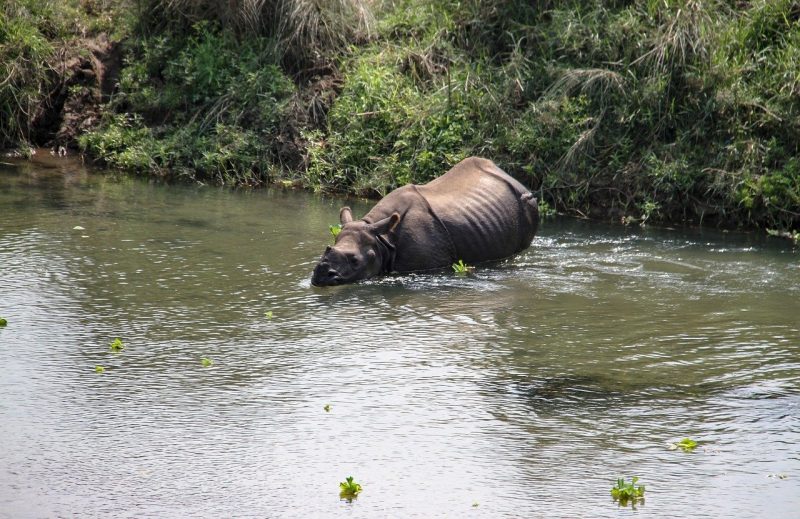
The One-horned rhino is a huge warm blooded creature, found in Assam. Over the top hunting has diminished the quantity of this species. These rhinos are killed to cut off their horns, which are sold at an exceptionally high worth. These animals are marked as one of the largest rhino species in world.
They are mostly found in north region of India and their major reason for population decrease is hunting for sports and some of them use them as agricultural pets and killed them. This hunting and killing of rhino has decreased their population and in 20th century their population was around 200 in number which is very less as per the records. No wonder they’re listed on the list of the top 10 most endangered animals in India. Recuperation of the more prominent rhino is one of the best preservation examples of overcoming adversity in Asia.
A big thanks to various authorities and conservation departments of Nepal and India which helps them in increase their population and bring back them to a goof number. At present their population number increase to 3700 in Indi and in Nepal region.
The length of the horn is around 8-25 inches and they are grey or brown. The horn is fold in skin which looks like armour. They are single, aside from when grown-up guys or rhinos approaching adulthood assemble at flounders or to brush. They love to eat grass and leaves; sometime they love to eat shrubs and trees too. They also prefer to eat fruit and some kind of aquatic plants. They use to live in forest and love to graze on open files of grass as grass is their favourite food.
#7 Kashmiri Red Stag

This animal is called as Hangul and they are marked as endangered species from many years. They are majorly found in various region of Himachal Paradesh and valleys of Kashmir. The population of Kashmiri Red stag is keeps on falling in 1970 which is around 150 at that time but various protection measures laws and measure has been taken which helps in conserving this endangered species of animals. Earning itself a mention on the list f the top 10 most endangered animals in India. In Kashmir, it is found essentially in the Dachigam National Park where it gets security, and somewhere else it is more in danger.
During the 1941s, the populace was somewhere in the range of 3000 and 5000 people, however from that point forward environment obliteration, over-touching by homegrown domesticated animals and poaching have decreased populace decisively. Prior accepted to be a subspecies of red deer various mitochondrial DNA hereditary investigations later had the hangul as a piece of the Asian clade of the elk.
This deer has a light backside fix without including the tail. Its jacket tone is brown with a dotting to the hairs. The internal sides of the hindquarters are greyish white, trailed by a line on the inward sides of the thighs and dark on the upper side of the tail. Every horn comprises of five prongs. The bar is firmly bended internal, while the forehead and prongs are typically near one another or more the burr.
#8 Lion Tailed Macaque
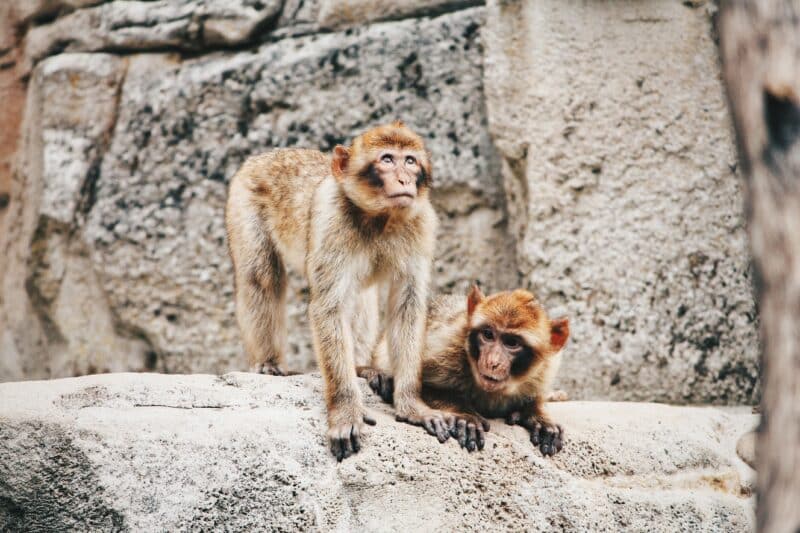
These are known as old world monkey which are found in west region of south India. They white cheeks which covers the head to the down of chin. With this look they are also known as beard ape. They are mainly found in rain forest and are majorly viewed in day time. It is diurnal, meaning it is dynamic solely in sunshine hours.
Whenever they’re dynamic, they will go through a portion of the day scrounging, and the other half will be spent resting or tracking down new regions to scavenge. Dissimilar to different macaques, it commonly stays away from people whenever the situation allows. In bunch conduct, the lion-followed macaque is similar as different macaques, living in various levelled gatherings of generally around 20 individuals, which ordinarily comprise of not many guys, commonly 1-3, and numerous females.
They have a polygynous mating framework with no particular rearing season. While there is no particular rearing season, they in all actuality do will generally raise in the wet season when assets are generally plentiful. Brief period is enjoyed preparing or playing with others in the gathering. Of the couple of guys, just a single will be the predominant male, who will shield his troop from others and be the person who breeds.
They are regional creature, protecting its region first with boisterous cries and exposed teeth towards the attacking soldiers. Assuming that this ends up being vain, it fights forcefully, which can bring about serious wounds because of gashes from their enormous canines. Different types of correspondence come through mounting to show strength, branch shaking to frighten away, lip-smacking as a well disposed hello, or yawning with a frown to demonstrate predominance.
#9 Indian Bison
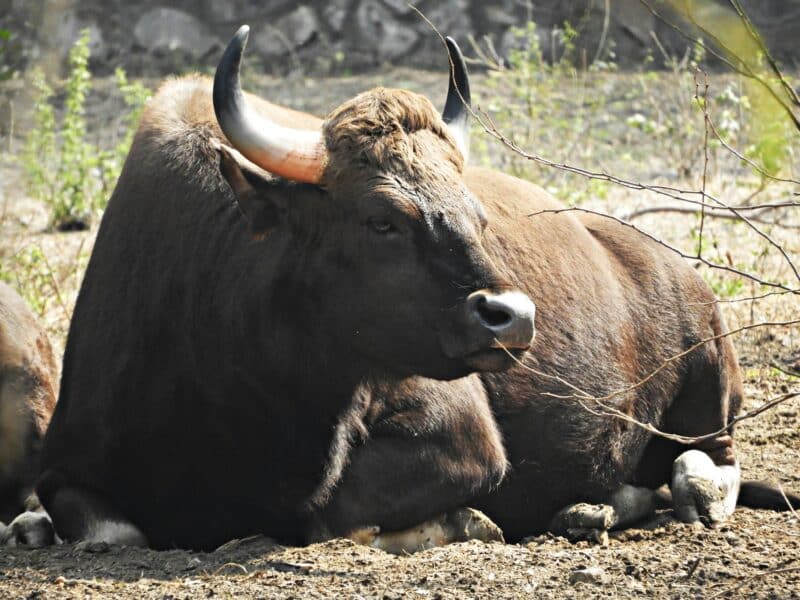
These Indian bison are known as Gaur, they are commonly called as Gaur. They are found in south region and south east Asian region of India. The worldwide populace was assessed at a limit of 21,000 mature people in 2016. It has declined by over 70% during the last three ages, and is extirpated from Sri Lanka and in all likelihood Bangladesh. Populaces in all around safeguarded regions are steady and expanding.
#10 Nilgiri Tahr
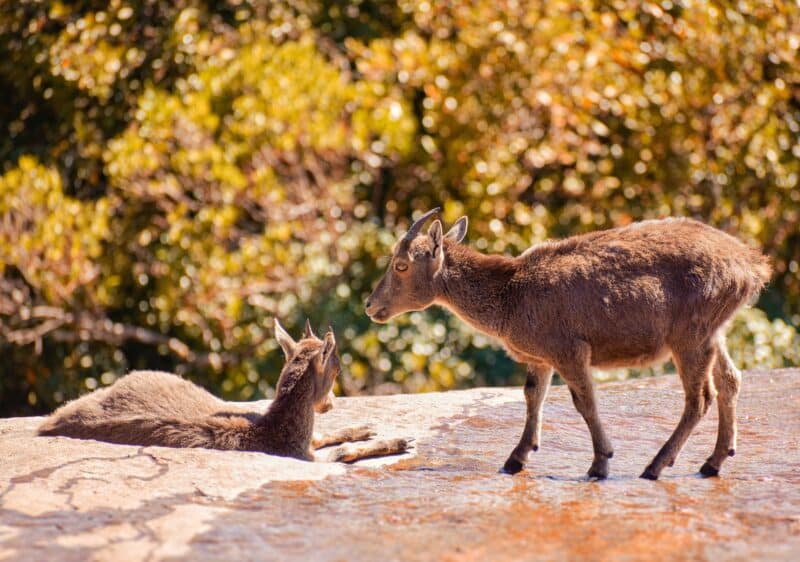
These are goats which are short in size having fur on their back and are also known as stocky goats. They are found in south region of Nilgiri Mountains and some parts of east and west portion of Tamil Nadu and south region of Kerala (India).
They are known as state animals of Tamil Nadu (India). As per their local name they look similar to sheep found in Ovis and the wild goat in Capre. Female are smaller than male tahr and when they get mature their colour becomes dark. The two genders have bended horns and their length will be around 30cm in female tahr and 40 cm in male tahr. Male tahr is around 80-100kg in weight and from the shoulder they are around 100cm tall in length. The males which are mature have grey markings on their back which helps them in identifying and that colour area is known as saddlebacks.
Summary on Top 10 Most Endangered Animals in India
All animals form important parts of the ecosystem, without even one of them the balance is disturbed. Over the last few decades, humans have negatively impacted nearly 75% of land species and 66% of ocean species. Currently we are on trend to driving nearly 1 million of the existing 8.7 million animal species to extinction. Unless we act soon, it will be too late.
Be sure to sign up to our newsletter and to other sources that support climate action and mitigation actions.
If you enjoyed reading about the top 10 most endangered animals in India, check out the top 10 most endangered animals in 2022 and 10 ways to live more sustainably next!
Join our Forum for free today!

- These are The 5 Largest Great White Sharks Ever Recorded - July 19, 2024
- The Surprising Benefits of Big Game Hunting - July 18, 2024
- $100k+ Hunting Experiences The Most Expensive Animals to Pursue - July 17, 2024

